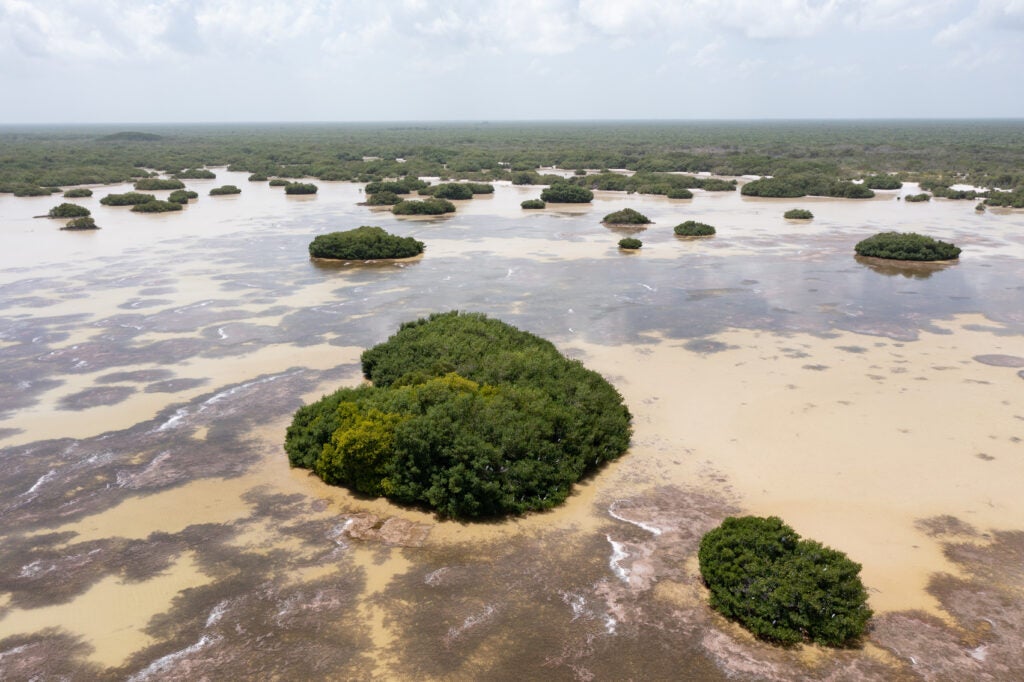
Drone shot of mangrove trees off the coast of the Yucatán Peninsula in Mexico. Carlos Aguilera / EDF Mexico
The world needs nature-based climate solutions (NbCS). These approaches use conservation, restoration, and management of natural and agricultural systems to retain existing, and sequester additional, carbon while reducing emissions of CO2 and other greenhouse gases. NbCS have been suggested to meet 20-30% of the world’s climate goals. Correspondingly, nature-based actions are included in the national commitments of 63% (104 of 168) of the signatories of the Paris Agreement.
However, defining the climate impact of different solutions requires accurate scientific measurement and accounting of greenhouse gas mitigation, including how long that benefit lasts. Where we lack accurate measurements and estimates of future durability, we cannot yet rely on NbCS to meet our climate goals.
Assessment of the science on NbCS
Environmental Defense Fund recently worked with experts in academia and other conservation and research institutions to assess the scientific confidence in more than 40 NbCS that have been proposed. The results of that inquiry are both optimistic and sobering.
The four most frequently credited NbCS by the four major carbon credit registries have high scientific confidence – tropical and temperate forest avoided conversion or degradation and reforestation. The confidence of the scientific community in those NbCS supports investing in these as climate solutions and demonstrates that we can develop sufficient understanding of process, measurement, and accounting methods necessary to meet high quality crediting requirements.
However, the experts concluded that 90% (39/42) of the proposed NbCS assessed in the study currently have insufficient scientific evidence for having climate impact we can count on. Within that 90% are NbCS like avoided conversion and degradation of systems as different as mangroves and boreal forests (see below for why).
Promisingly, the experts do have confidence that we can remedy this situation: focused research over the next five years could resolve many of the remaining questions for two-thirds of those pathways. Given that some, like agroforestry, tropical peatland conservation, and biochar additions are also estimated to have large-scale climate impacts, this study provides a roadmap for prioritizing research efforts.
The importance of location
Every NbCS is different, and so are the specific uncertainties and research needs. Prediction of how natural systems may change as the climate changes – affecting their carbon storage and greenhouse gas emissions – is inherently uncertain. We are better at modeling some systems (like tropical forests) than others (like seagrass beds). But all NbCS pathways have something in common – location matters.










